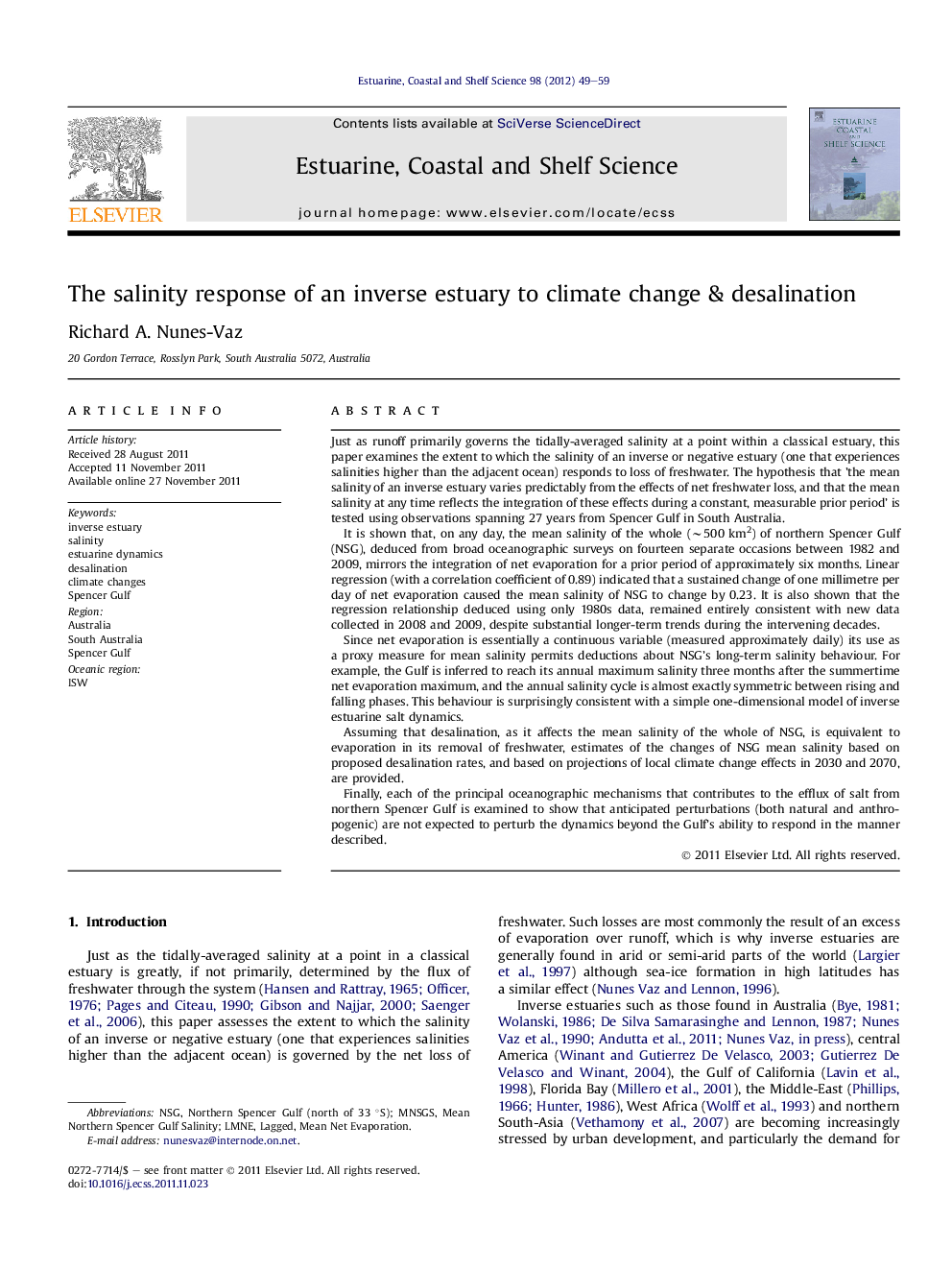| کد مقاله | کد نشریه | سال انتشار | مقاله انگلیسی | نسخه تمام متن |
|---|---|---|---|---|
| 4540326 | 1626695 | 2012 | 11 صفحه PDF | دانلود رایگان |

Just as runoff primarily governs the tidally-averaged salinity at a point within a classical estuary, this paper examines the extent to which the salinity of an inverse or negative estuary (one that experiences salinities higher than the adjacent ocean) responds to loss of freshwater. The hypothesis that ’the mean salinity of an inverse estuary varies predictably from the effects of net freshwater loss, and that the mean salinity at any time reflects the integration of these effects during a constant, measurable prior period’ is tested using observations spanning 27 years from Spencer Gulf in South Australia.It is shown that, on any day, the mean salinity of the whole (∼500 km2) of northern Spencer Gulf (NSG), deduced from broad oceanographic surveys on fourteen separate occasions between 1982 and 2009, mirrors the integration of net evaporation for a prior period of approximately six months. Linear regression (with a correlation coefficient of 0.89) indicated that a sustained change of one millimetre per day of net evaporation caused the mean salinity of NSG to change by 0.23. It is also shown that the regression relationship deduced using only 1980s data, remained entirely consistent with new data collected in 2008 and 2009, despite substantial longer-term trends during the intervening decades.Since net evaporation is essentially a continuous variable (measured approximately daily) its use as a proxy measure for mean salinity permits deductions about NSG’s long-term salinity behaviour. For example, the Gulf is inferred to reach its annual maximum salinity three months after the summertime net evaporation maximum, and the annual salinity cycle is almost exactly symmetric between rising and falling phases. This behaviour is surprisingly consistent with a simple one-dimensional model of inverse estuarine salt dynamics.Assuming that desalination, as it affects the mean salinity of the whole of NSG, is equivalent to evaporation in its removal of freshwater, estimates of the changes of NSG mean salinity based on proposed desalination rates, and based on projections of local climate change effects in 2030 and 2070, are provided.Finally, each of the principal oceanographic mechanisms that contributes to the efflux of salt from northern Spencer Gulf is examined to show that anticipated perturbations (both natural and anthropogenic) are not expected to perturb the dynamics beyond the Gulf’s ability to respond in the manner described.
Journal: Estuarine, Coastal and Shelf Science - Volume 98, 10 February 2012, Pages 49–59